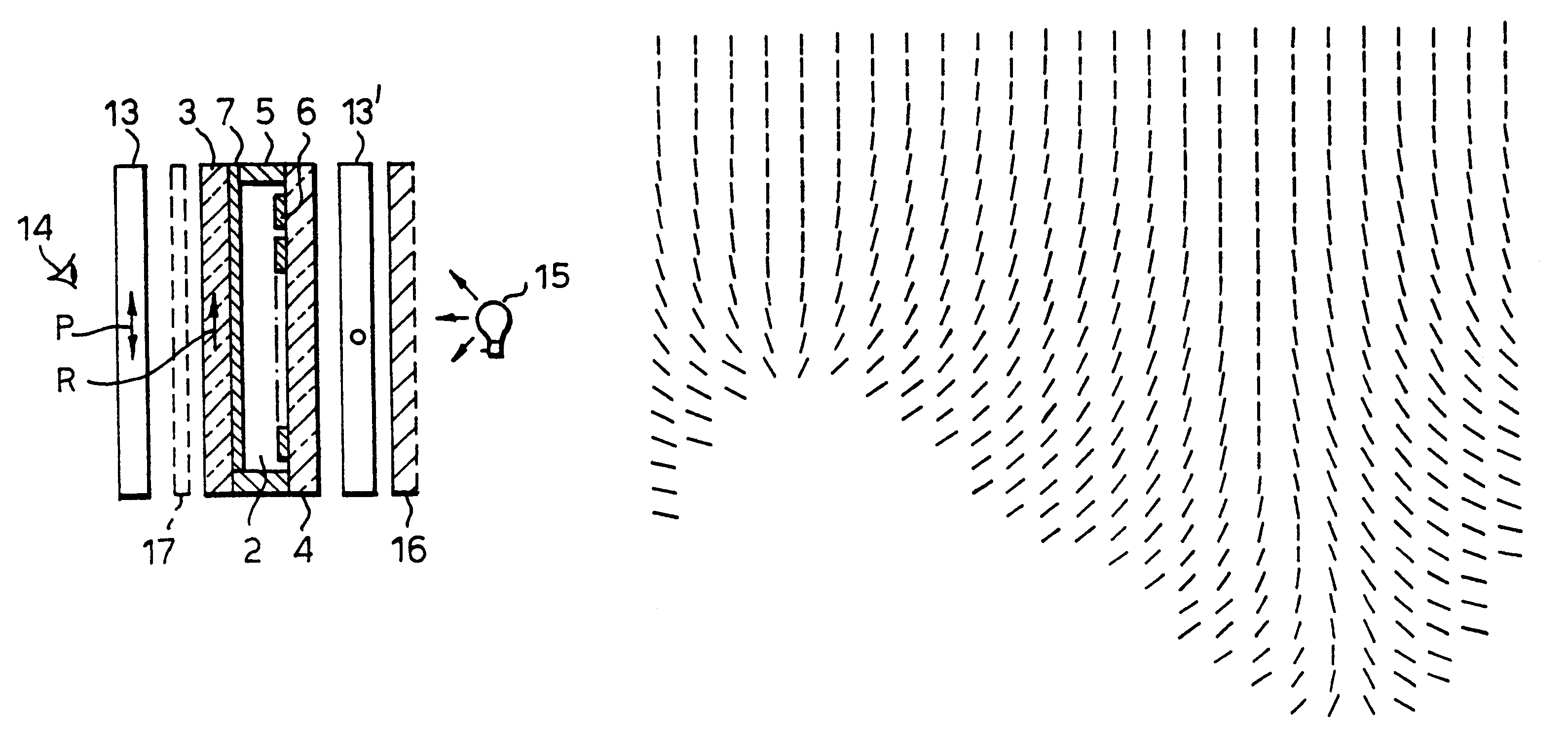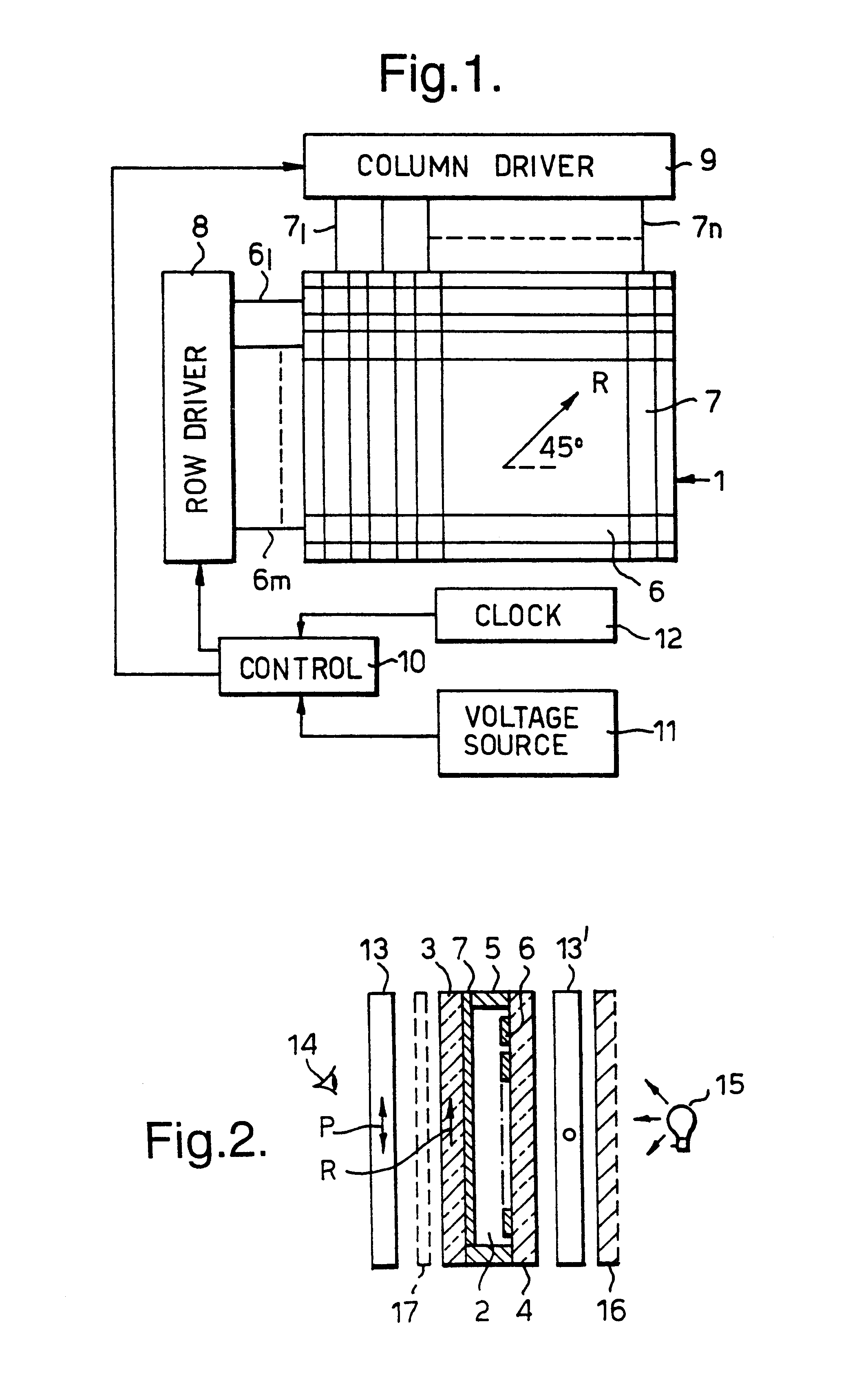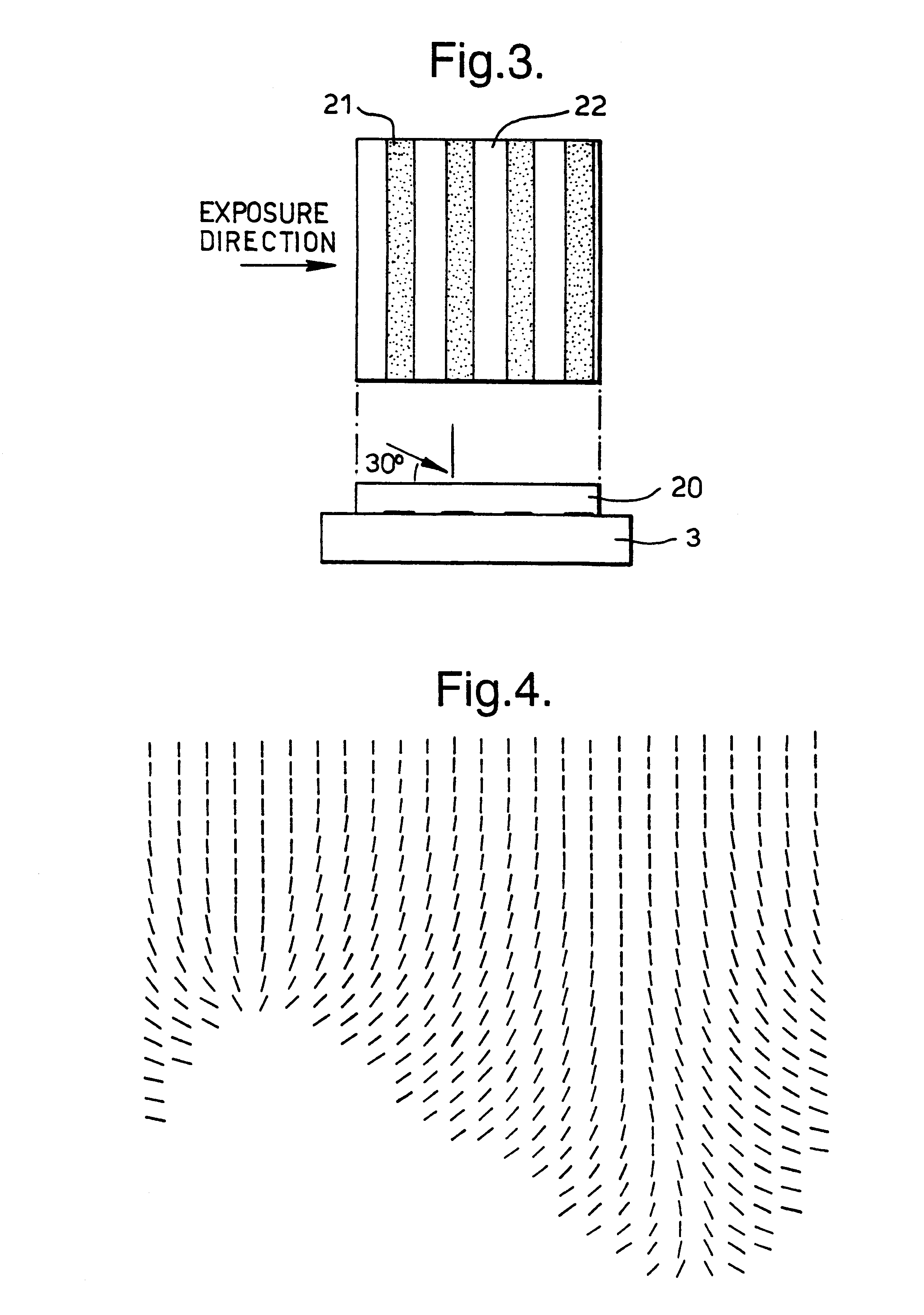Bistable nematic liquid crystal device
a liquid crystal device and nematic technology, applied in liquid crystal compositions, instruments, chemistry apparatuses and processes, etc., can solve the problems of low shock resistance, small portable size, and high voltage needed to switch materials,
- Summary
- Abstract
- Description
- Claims
- Application Information
AI Technical Summary
Problems solved by technology
Method used
Image
Examples
example 1
A piece of ITO coated glass to form the cell wall 3, 4 was cleaned with acetone and isopropanol and was then spin coated with photoresist (Shipley 1805) at 3000 rpm for 30 seconds giving a coating thickness of 0.55 .mu.m. Softbaking was then carried out at 90.degree. C. for 30 minutes.
A contact exposure was then carried out on the coated wall 3, 4 using a chrome mask 20 containing 0.5 .mu.m lines 21 and 0.5 .mu.m gaps 22 (hence an overall pitch of 1 .mu.m) as shown in FIG. 3. The exposure was carried out at non-normal incidence, in this case an angle of 60.degree. was used. Mask 20 orientation is such that the groove direction is substantially perpendicular to the to plane of incidence as shown in FIG. 3. Exposure in this geometry leads to an asymmetric intensity distribution and therefore an asymmetric grating profile (see for example B. J. Lin, J. Opt. Soc. Am., 62, 976 (1972) ). Coated cell walls 3, 4 were exposed to light from a mercury lamp (Osram Hg / 100) with an intensity of 0...
example 2
A second example of a bistable device is now described. A piece of ITO coated glass to form the cell wall was cleaned with acetone and isopropanol and was then spin coated with photoresist (Shipley 1813) at 3000 rpm for 30 seconds giving a coating thickness of 1.5 .mu.m. Softbaking was then carried out at 90.degree. C. for 30 minutes.
A contact exposure was then carried out using a chrome mask containing 0.5 .mu.m lines and 0.5 .mu.m gaps (hence an overall pitch of 1 .mu.m). In this example the exposure was carried out at normal incidence. Exposure in this geometry leads to a symmetric intensity distribution and therefore a symmetric grating profile. Samples were exposed to light from a mercury lamp (Osram Hg / 100) with an intensity of 0.8 mW / cm.sup.2.
After the exposure the sample was released from the mask and developed in Shipley MF319 for 20 seconds followed by a rinse in de-ionised water. This left the sample patterned with a symmetric surface modulation. The photoresist was then ...
example 3
The bistable grating surface can also be constructed opposite a planar surface. One such cell consisted of a grating with the same profile to that described in example 2. This was constructed opposite a rubbed polymer surface formed using a layer of PI32 polyimide (Ciba Geigy). The rubbing direction on the polyimide surface was set parallel to the grating groove direction on the grating surface. The cell gap was set to 2.5 .mu.m and nematic E7 was used to fill the cell. Cooling to room temperature after filling revealed two states which are shown schematically in FIGS. 11(a) and 11(b). This Figure differs from FIGS. 7(a) and 7(b) in that the groove direction on the bistable surface is now in the plane of the page (in an x,y plane). Thus the 90.degree. pretilt state on the grating forms the hybrid structure shown in (a') while the 0.degree. pretilt state on the grating forms the twisted structure shown in (b'). To achieve optical contrast between the states, the cell was placed in-be...
PUM
 Login to View More
Login to View More Abstract
Description
Claims
Application Information
 Login to View More
Login to View More - R&D
- Intellectual Property
- Life Sciences
- Materials
- Tech Scout
- Unparalleled Data Quality
- Higher Quality Content
- 60% Fewer Hallucinations
Browse by: Latest US Patents, China's latest patents, Technical Efficacy Thesaurus, Application Domain, Technology Topic, Popular Technical Reports.
© 2025 PatSnap. All rights reserved.Legal|Privacy policy|Modern Slavery Act Transparency Statement|Sitemap|About US| Contact US: help@patsnap.com



